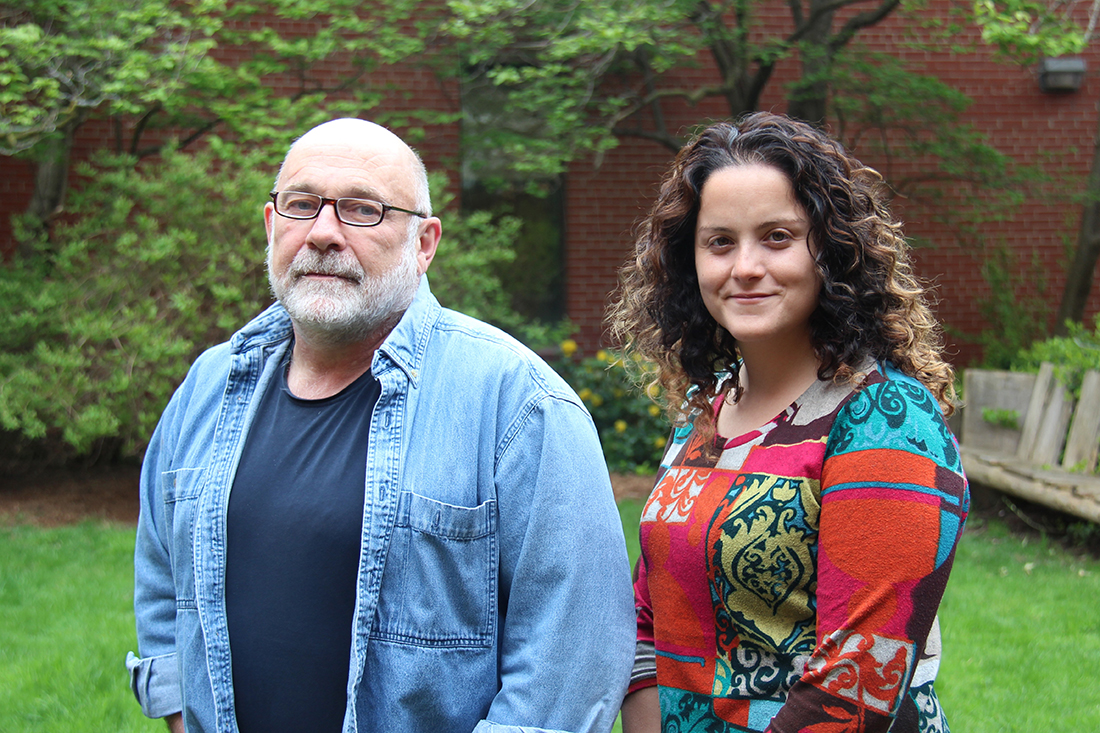What’s happening in rural Ontario? Telling the stories of the precariously employed

Waiting in line at a small town coffee shop got Prof. Al Lauzon wondering about the different demographic he was seeing working at this rural Ontario location – more middle aged male workers. Job losses from the auto sector over the last decade could explain some of the changes in this older work force, but Lauzon wondered what was happening to employment opportunities in rural Ontario.
Around the same time, the University of Guelph put out a call for letters of intent, under the Ontario Ministry of Agriculture, Food and Rural Affairs-University of Guelph Partnership, for the Agricultural and Rural Policy Research Program to gain a better understanding about precarious employment in rural areas. With Lauzon’s interest in fostering vibrant rural communities, the idea for a research project was born.
“There was very little existing research on precarious employment in rural areas and I wanted to get a sense of what was happening with employment opportunities in rural Ontario,” says Lauzon, professor with the School of Environmental Design and Rural Development (SEDRD) at the University of Guelph.
Lauzon assembled a team to examine precarious rural employment in rural Ontario, and the implications for local communities, as part of a three-year research project. The team includes PhD student Valencia Gaspard, Dr. Ray Bollman (Statistics Canada - retired), Dr. Ryan Gibson (SEDRD, University of Guelph), Dr. Heather Mair (Department of Leisure and Recreation, University of Waterloo) and Carol Kenny (Ontario Ministry of Agriculture, Food and Rural Affairs).
Precarious employment is defined as jobs that are not full time, typically lower paying, do not include benefits, offer little opportunity for training or advancement, and often have no consistent schedule. Rural Ontario makes up about 18 percent of the overall population in the province, and that’s where Lauzon’s team will focus their research.
“We know a little bit about the impact of precarious employment in urban areas, but we don’t know about the experiences of people in rural Ontario,” says Valencia Gaspard, project manager and Ph.D. student in the school. “I’m really interested in telling the story of rural Ontarians who, for a variety of reasons, don’t have full-time, Monday to Friday jobs with benefits.”

Precarious employment isn’t just about wages. “People who are precariously employed have lower physical, mental and emotional health,” says Gaspard. “We know there are negative social impacts.”
Gathering data to respond to the challenge of precarious employment
There are three phases to the precarious rural employment project that’s funded through the OMAFRA-University of Guelph Partnership.
The first phase – which is nearly complete – involves analyzing Stats Canada data to paint a picture of the numbers and trends for employment across rural Ontario to understand where the jobs are and where people are working. The early results show that precarious employment is more dominant in certain sectors and areas of the province.
Phase two will take the data and move into the qualitative portion of the project. “We’ll start by reaching out to people and organizations in rural communities who can link us with workers who will tell their story,” says Gaspard. “We’ll also be gathering information on the resources available in rural communities that could help mitigate the impact of precarious employment.”
For the third phase of the project, Gaspard will spend the summer interviewing professionals working in employment – referred to as key informants in the project – who have an on-the-ground view of precarious employment in rural areas. In the fall, she will follow-up with interviews with workers who are precariously employed.
“I will talk to as many people as I can to hear their experiences, and give them a chance to have their story incorporated into a step towards a solution.” She refers to this as a people first approach – using the individuals who are living with precarity to provide ideas for systemic change to inform future policy. The interviews will also form the basis of Gaspard’s doctoral dissertation.
The final part of the project will pull the quantitative and qualitative information together into a final report, expected in 2018. At this point in the project, Lauzon hopes the research will provide some insight into precarious employment in rural Ontario, and whether it is different from precarious employment in urban areas. “I also hope the information we gather can be used to help municipalities respond to their own challenges,” says Lauzon.
Working for social change in rural Ontario is something Lauzon knows well. As a past president of the Canadian Rural Revitalization Foundation, he’s worked across many sectors in rural Ontario from health care to youth to education. “This project is critical work for the changing demographic in rural Ontario,” says Lauzon. “As the population ages and the economy contracts, rural Ontario becomes engaged in a downward spiral. If the government is promoting economic development where precarious employment is predominant, we need to identify where and what the challenges are and how to best address them to promote the wellbeing of rural Ontario.”
Follow the progress of this project at ruralprecariousemployment.wordpress.com